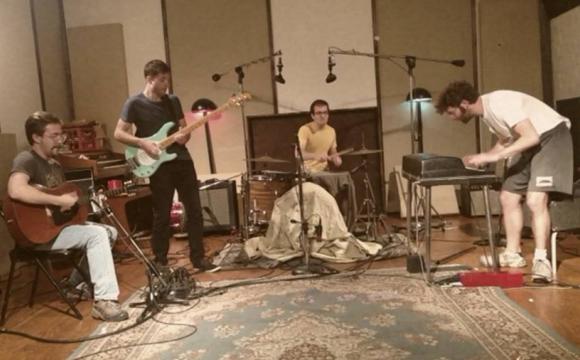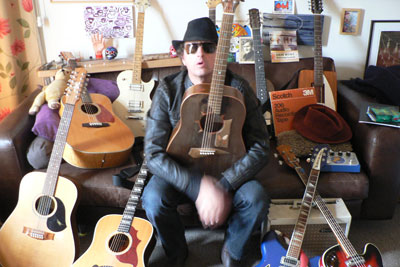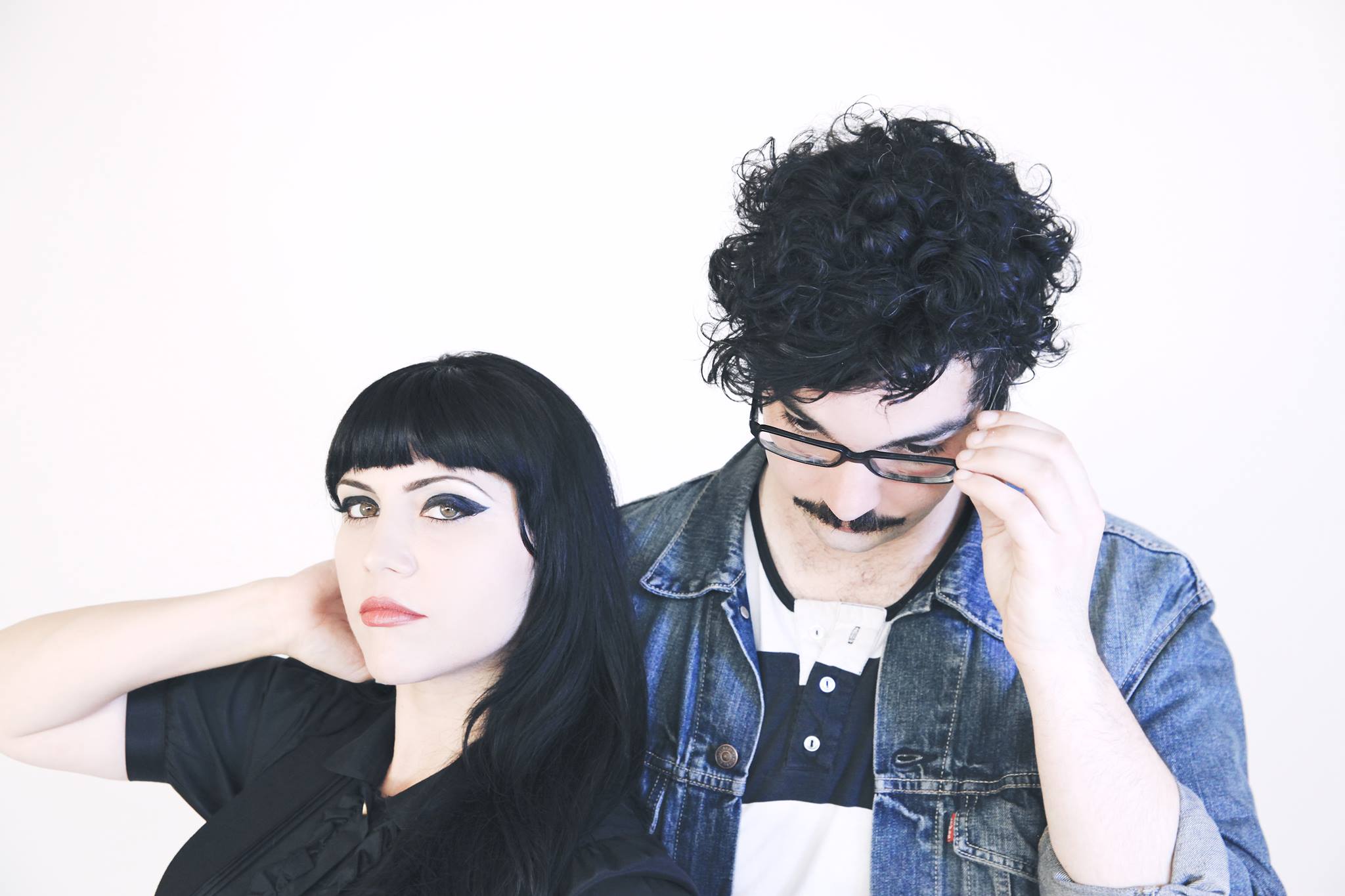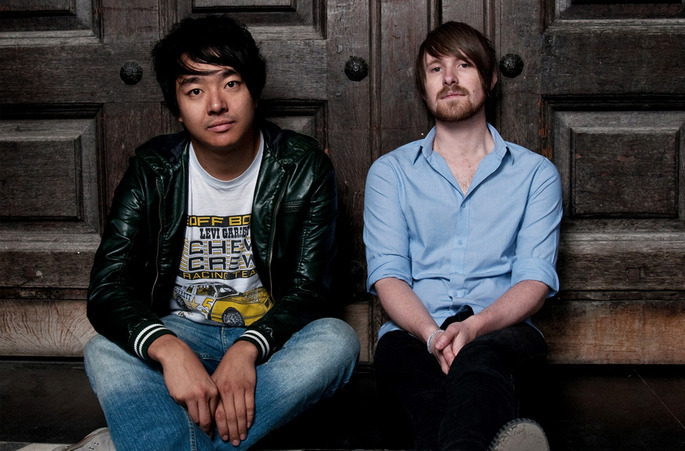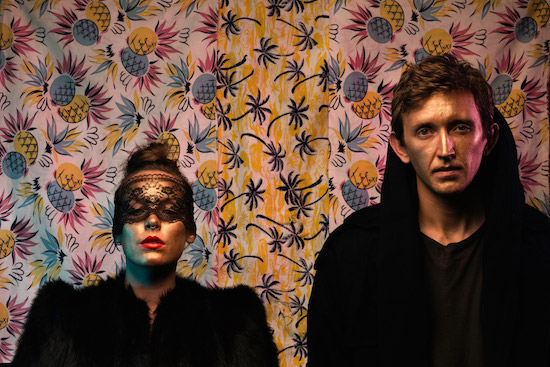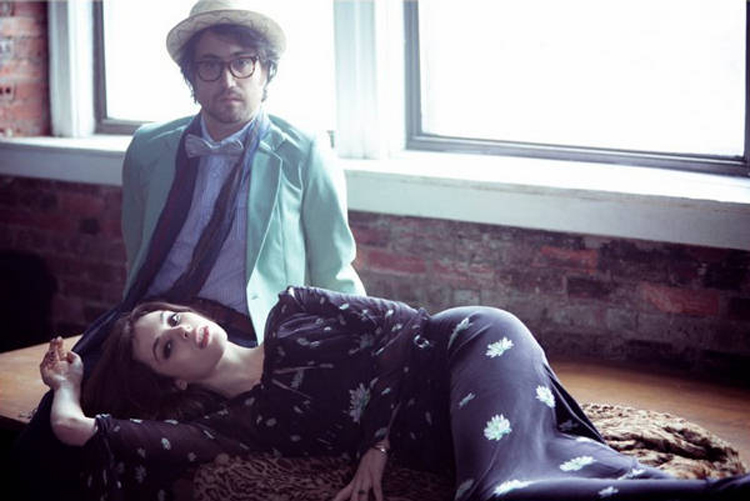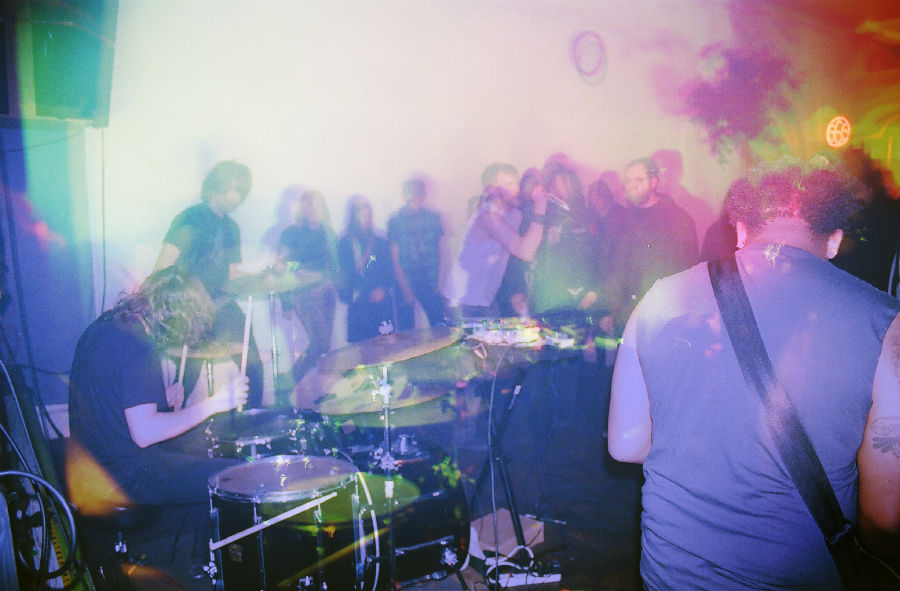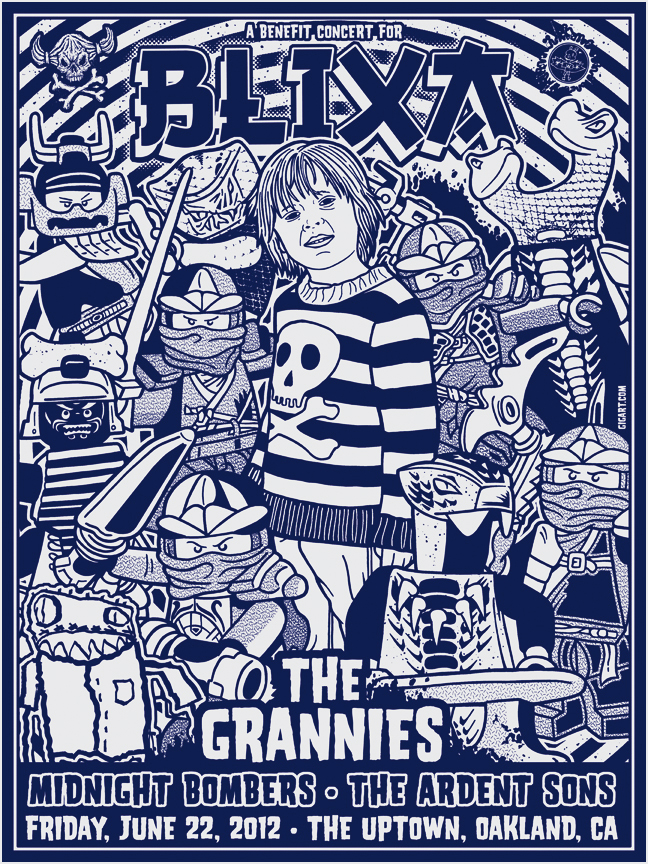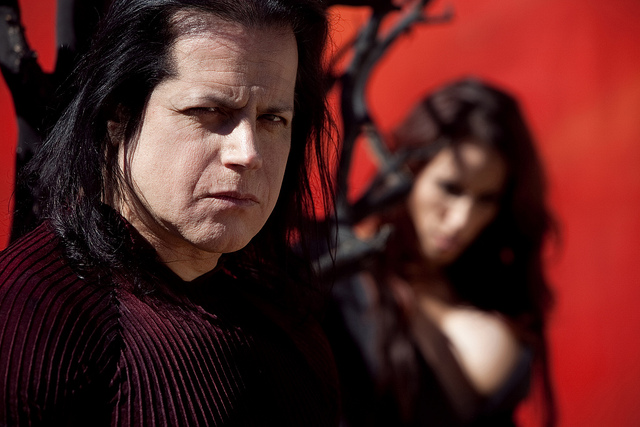By Jonathan Kirchner
Members of the band Vulfpeck describe themselves as a “half-Jewish German-American rhythm section.” Creators of severely catchy, mostly-instrumental grooves, the four-piece — who first met in a German literature class at the University of Michigan — have built a following with their quirky YouTube videos: Each album track is accompanied by a cleverly shot and edited video of its recording. The videos not only capture the band’s camaraderie, loose attitude, and sense of humor, but also their musical cohesion as a group. Each song is endlessly and effortlessly funky.
As we listened to their fourth EP, Fugue State, released last week, a passerby commented on how their music has a distinctly familiar quality. This makes sense, for a group modeled after the great rhythm sections of the ’60s and ’70s: tight-knit groups of studio players like those in Detroit (Motown), Memphis (Stax) and Muscle Shoals (Atlantic, Chess) that played on not only countless soul and R&B hits, but on classic pop and rock records as well.
The LA-based band created a bit of a stir earlier this year with their Sleepify album — a collection of 31-second-long silent tracks that they told their fans to stream on Spotify, on repeat, as they slept. (That’s the minimum song length after which the music streaming service pays bands a small fee.) The group promised to use the Spotify proceeds to fund a tour of free shows, booked around the cities where the album was streamed the most — and that’s just what they did, after raising about $20,000. (Spotify has since removed the album.)
We spoke over the phone with Jack Stratton, multi-instrumentalist, audio/video engineer, and mastermind for the band, ahead of their upcoming performance at Brick & Mortar Music Hall on Mon/15. It’s a free show, of course. Frequent Vulfpeck collaborator Joey Dosik opens.
San Francisco Bay Guardian Do you want to talk a little about Sleepify and how it came about?
Jack Stratton The first time we had talked about touring, we were trying to play live, because there’s somewhat of a demand from our fans of the YouTube videos. So we were just talking about ways to do that, and get information from other groups about what it costs, and it seemed like a losing-money venture.
So we were trying to think up ways for it to make sense, because really we enjoy playing live, and simultaneously we were talking about this demand-funded tour, where you say: If 100 people in any given place say they’ll go, we’ll show up. And we talk about Spotify all the time when we release stuff — whether it hurts sales or has no effect. It’s hard to judge. So all of those conversations kind of collided into this demand-funded Spotify tour.
SFBG Would you consider it a success so far?
JS Oh, absolutely, yeah. Especially since our last release, it’s hard to say how many fans came in from Sleepify. Probably the majority of people were just interested in the Sleepify part of it, but people did end up checking out the band and enjoying it. I think it almost doubled our fanbase since then, so there’s no way to spin it negative, really.
SFBG I know you’re based in LA. Are all the members there these days?
JS No, not right now; we’re all scattered.
SFBG How do you find time to get together and make music?
JS Vulfpeck is a strict Monday-through-Friday workweek, once a year. Our last album we did in a week in Ann Arbor, and definitely the eventual goal is to be doing that way more often, with other artists, like a classic rhythm section. That’s the vision.
SFBG Do you seek out freelance work backing up other singers? It seems like your records could serve as a great demo tape.
JS Yeah, we’ve done a little bit of that. That’s definitely the vision for it, because you can put out a lot more material. Like, you watch any documentary about [classic soul/R&B rhythm sections], and they played on so many hits. Because with any single artist, there’s just a limit to how much new material you want to hear in a year, [but a rhythm section] can just crank it out — and we’re very fast.
The larger concept to start a rhythm section was that — name a band. If you name any band, I could name their dramatic falling out, but all the rhythm sections, they just kinda do their thing. And then there’s a documentary 50 years later and they’re all still hanging out.
SFBG Fugue State is your fourth EP; how would you say the band’s sound has evolved?
JS Well, I’ve gotten better at mixing, we’ve all gotten better at playing, we’ve gotten better as an ensemble…so those are hard to quantify. The team is improving. We’ve had a mastering engineer since the second album, Devin Kerr, and that’s really helped the overall sound.
SFBG I saw that you and Devin released a Vulf compressor plugin for other musicians to use. Not a lot of bands can say that. How did that come about?
JS Yeah, I’m very excited about that. That was, man, a long time in the works. Not heavy duty work, but I was really into, at one point, this sound of Madlib and Flying Lotus and J Dilla. Whatever that sound was, that pumping, where the whole track pumps — I was like “What the hell is that?”
And I did some research, and the Internet is a magical thing, and I was directed to these late 90s/early 2000s digital samplers. And the compressors on those, certainly Madlib was using them, so I went to Devin and was like, “Check out these sounds I’m getting with these digital compressors.” And he was trying to replicate it with his plugins and he couldn’t do it at all, so he just did a ton of listening to these characteristics, that were not, I think, programmed.
SFBG Right, they might have been bugs or imperfections…
JS Yeah, and actually they were, because [the manufacturers] started phasing out certain effects that were classics. They just didn’t know. [Devin’s] a dangerous dude because he’s very good at DSP [Digital Single Processing] and he’s a mastering engineer, so he’s very musical and has this very technical side. So he did his thing and we would test it out and it was really thrilling. And then our friend Rob Stenson did the interface with Devin and now its in beta and eventually it’ll be out.
SFBG Do you have a take on analog vs. digital recording?
JS We’re fans of both. We’ll do stuff to tape; we’ll use a nice mixing board and go into the computer or some funky cassette preamp. We’ll do it all — no hangups.
SFBG A lot of your videos are shot in living rooms and bedrooms and they look pretty impromptu.
JS Yeah, I was kind of all about building a nice tricked-out studio for us. But Theo [Katzman, drummer-guitarist] mentioned part of the charm is all of these different locations and how rugged the setups are.
SFBG The last couple records have each featured a song with Antwaun Stanley [on vocals]. Do you envision more collaboration with him in the future?
JS Oh yeah, I mean, he rules. It’s really fun to work with him. Honestly, not many people could [with us]. It’s not just picking a good voice with us; the person has to be a really good improvisor, like Antwaun, because they have to make it happen on the spot, and there’s no overdubs or background vocals. It’s not just a nice timbre; you have to be a really talented singer and improvisor — a performer.
SFBG Did you write the lyrics or did he?
JS I wrote those. That is one of the greatest joys I wish everyone could experience is having Antwaun Stanley sing your lyrics. Because they go from, like, ridiculousness, to sounding like they were meant to be.
SFBG In general, do you write all of the parts for the band or is it more of a collaborative process as far as the arrangements go?
JS Depends on the tune. I like how versatile everyone is: We’ve done tunes where it’s completely arranged, we’ve done tunes where it’s like: “Do your thing.” Generally, one person comes in with the nugget and they’ll kind of be producer on that track and get to call the shots, but it’s collaborative within that.
SFBG You’ve got some multi-instrumentalists in the band. [Theo Katzman doubles on drums and guitar and Jack plays drums, various keyboards and guitar.] How do you choose who’s going to be on drums, and who’s on keys, etc., for each song?
JS It’s mostly a decision of who will be able to pick up the parts fastest, because it’s all on-the-spot — there’s no rehearsal. Theo’s got a really good ear harmonically. I don’t really, I can’t pick up tunes that quick. If I’ve written the tune on keyboards, I’ll play keyboards, but if it’s someone else’s tune and it’s difficult, he’ll play guitar [and I’ll play drums].
SFBG What does Vulfpeck mean?
JS That was kind of the earliest part of it: It’s “wolfpack,” pronounced by a German, but phonetically spelled out in English. So, if a German saw the word wolfpack, it would probably come out “vulf-pock,” which I screwed up at the time. I thought it would be “peck,” but apparently it’s “pock.”
But that’s the whole idea, and it’s endless joy, because I love the name and it’s great for the Internet, you know? Getting all the [web] addresses. I think there was one military dating profile — that was it — when I first Googled it. I was like “Alright, I think this is open.”
SFBG Search engine optimized…
JS Our Google splash page is — I mean you can’t control these things — but nice, man, it’s all us.
—
VULFPECK
With Joey Dosik
9pm, free
Brick & Mortar Music Hall
1710 Mission, SF
www.brickandmortarmusic.com

